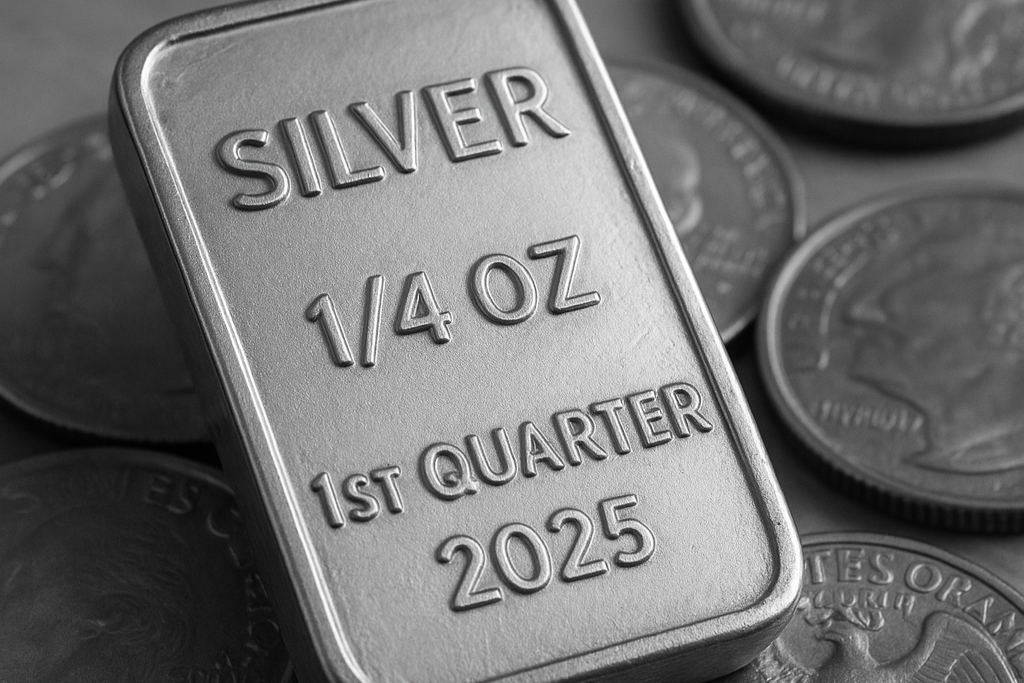Silver demand has reached unprecedented levels for the fourth consecutive year, primarily driven by the accelerating transition to green energy technologies. According to the latest World Silver Survey from The Silver Institute, industrial applications consumed a record 680.5 million ounces in 2024, representing a 4% increase over the previous year.
This robust industrial demand has maintained the silver market in a deficit position for the fourth straight year. The cumulative shortfall between
...
Silver demand has reached unprecedented levels for the fourth consecutive year, primarily driven by the accelerating transition to green energy technologies. According to the latest World Silver Survey from The Silver Institute, industrial applications consumed a record 680.5 million ounces in 2024, representing a 4% increase over the previous year.
This robust industrial demand has maintained the silver market in a deficit position for the fourth straight year. The cumulative shortfall between 2021 and 2024 has reached a staggering 678 million ounces—equivalent to approximately 10 months of global mine production at current rates.
“Silver industrial demand continued to benefit from structural gains linked to the green economy, including investment in grid infrastructure, vehicle electrification, and photovoltaic applications,” states The Silver Institute in its comprehensive report.
The persistent imbalance between supply and demand comes against a backdrop of heightened geopolitical tensions, particularly between the United States and China. The Trump administration’s implementation of steep tariffs, including an 84% duty on Chinese imports, has introduced significant volatility into commodity markets.
Despite these challenges, silver mining stocks have outperformed the metal itself, rising 37% year-to-date compared to silver’s more modest 17% gain. This outperformance suggests investors recognize the fundamental strength in the sector despite short-term price fluctuations.
The green energy transition remains the primary catalyst for silver’s industrial demand growth. Advanced solar technologies, particularly Tunnel Oxide Passivated Contact (TOPCon) panels, require approximately 50% more silver than conventional models. This single application drove demand for roughly 200 million ounces in 2024, with projections indicating US solar generation could surpass coal by 2030, potentially requiring 300 million ounces annually.
Electric vehicles represent another significant growth segment, using about 50% more silver than traditional internal combustion engines. Industry analysts project this sector could consume up to 90 million ounces by 2030 as global EV adoption accelerates.
The supply response to these demand pressures has been notably muted. Global silver production increased by less than 1% in 2024, highlighting the challenges in rapidly expanding output. This constraint underscores the strategic importance of development-stage companies like Vizsla Silver, which is advancing a high-grade project in Mexico’s Sinaloa region.
“We’re a pure play silver company focused on developing one of the greatest undeveloped silver projects that certainly I’ve seen in my career,” states Simon Cmrlec, Chief Operating Officer of Vizsla Silver. The company’s flagship project boasts over 360 million ounces of silver equivalent in total resources.
Early production reports from major silver producers for the first quarter of 2025 reveal mixed results. First Majestic Silver achieved record production of 3.7 million ounces, an 88% year-over-year increase, bolstered by its Cerro Los Gatos acquisition. Aya Gold and Silver reported an impressive 192% increase to 1.07 million ounces, while Endeavour Silver experienced a 17% decline to 1.2 million ounces due to lower throughput at its Guanaceví mine.
Looking ahead, The Silver Institute forecasts a marginal decline in total silver demand to 1.15 billion ounces in 2025, with industrial fabrication expected to plateau after several years of record growth. Nevertheless, the market is projected to remain in deficit, albeit at a four-year low of 117.6 million ounces.
The escalating trade tensions between the US and China represent a significant risk factor. The Silver Institute warns that “an extended period of elevated tariffs, or a further escalation of global trade wars, could lead to significant supply chain disruptions and sharply lower global GDP growth.”
For investors, silver presents a compelling case based on its dual nature as both an industrial metal and a precious metal. The ongoing structural deficits, strong industrial fundamentals, and potential monetary catalysts—particularly if central banks begin cutting interest rates as anticipated in late 2025—suggest a positive medium to long-term outlook despite likely continued price volatility.
As the green energy transition accelerates and global economic uncertainties persist, silver’s fundamental supply-demand imbalance shows little sign of resolution in the near term, potentially supporting higher prices in the years ahead.


